DIY Projects: How to Create Wooden Garden Signs
Creating personalized wooden garden signs is a fantastic way to infuse your outdoor space with a touch of creativity and charm. Whether you want to label your vegetable patch, welcome guests, or simply add a decorative element to your garden, making your own signs can be both rewarding and fun. Imagine stepping into your garden and seeing a beautifully crafted sign that not only conveys a message but also reflects your personality! In this article, we will explore the steps and materials needed to craft these charming signs, ensuring your outdoor area is as unique as you are.
When it comes to crafting wooden garden signs, selecting the appropriate type of wood is crucial for both durability and aesthetics. Different types of wood offer various benefits, and understanding these can help you make an informed choice. For instance, cedar is a popular option due to its natural resistance to rot and insects, while pine is often more affordable but may require additional treatment to withstand the elements. Here’s a quick comparison of popular wood types:
| Wood Type | Durability | Cost |
|---|---|---|
| Cedar | High | Medium |
| Pine | Medium | Low |
| Redwood | High | High |
| Birch | Medium | Medium |
Choosing the right wood not only affects the longevity of your sign but also its overall appearance. Consider the climate in your area and how much exposure to the elements your sign will face. With the right wood, your garden sign can be a lasting piece of art that enhances the beauty of your outdoor sanctuary.
Before diving into your DIY project, it’s essential to gather all the necessary tools and materials. Having everything ready will not only streamline the process but also make it much more enjoyable. Here’s what you’ll need:
Basic hand tools are the backbone of any DIY project. For cutting, shaping, and finishing your wooden signs, ensure you have:
- Hand saw - for cutting the wood to size.
- Chisels - for adding decorative elements.
- Sandpaper - for smoothing rough edges.
- Paintbrushes - for applying paint and finishes.
If you’re looking to speed up the process, power tools can be a game changer. Tools like a jigsaw or a router can help you achieve intricate designs with precision. However, always remember to follow safety guidelines when using these tools!
To give your sign that professional touch, consider the finishing materials. A good quality paint or stain can enhance the wood’s natural beauty, while a sealant will protect it from the elements. Choose colors that complement your garden’s aesthetic, and don’t forget to have fun with it!
Safety should always be a priority during DIY projects. Here are some important safety measures to keep in mind:
- Always wear safety goggles when cutting or sanding wood.
- Use gloves to protect your hands from splinters and chemicals.
- Ensure your workspace is clean and organized to prevent accidents.
Now comes the fun part—designing your garden sign! This is where your creativity can truly shine. Think about what message you want to convey and how you can make it visually appealing. You could incorporate your favorite quotes, plant names, or even whimsical phrases that reflect your personality.
Typography plays a crucial role in the readability and aesthetics of your sign. Choose fonts that are not only attractive but also easy to read from a distance. Mixing different font sizes can create a dynamic look, but be careful not to overdo it—less is often more!
Adding graphics or images can significantly enhance your sign's visual appeal. Consider incorporating designs that resonate with your garden theme, such as flowers, vegetables, or even whimsical creatures. These little touches can make your sign not just informative, but also a delightful piece of art.
Once your sign is cut and designed, it’s time to bring it to life with paint and finishes. This is where your creativity can really take flight! There are various techniques you can use to apply paint and finishes effectively.
One of the first decisions you’ll need to make is whether to use a brush or spray paint. Each method has its pros and cons. Brush painting allows for more control and detail, while spray painting can cover large areas quickly and evenly. Consider the look you’re going for and choose accordingly!
To ensure your sign withstands the test of time, applying a sealant is essential. Sealants protect your sign from moisture and UV rays, keeping it looking fresh and vibrant. Make sure to follow the manufacturer’s instructions for the best results.
After all your hard work, it’s time to install your wooden garden sign! Choosing the right location can enhance its impact and visibility. Think about where you want it to be seen most—perhaps near the entrance of your garden or among your favorite plants.
When deciding where to install your sign, consider factors such as sunlight exposure, visibility from walking paths, and how it fits into the overall design of your garden. A well-placed sign can become a focal point that draws attention and admiration.
To keep your garden sign looking fresh, regular maintenance is necessary. Wipe it down occasionally to remove dirt and debris, and check for any signs of wear or damage. A quick touch-up with paint or sealant can go a long way in preserving its beauty over time.
1. What type of wood is best for outdoor signs?
Cedar and redwood are excellent choices due to their natural resistance to rot and insects.
2. Can I use regular paint on my garden sign?
It’s best to use outdoor paint or stains designed for wood to ensure durability against the elements.
3. How can I make my sign more weather-resistant?
Applying a quality sealant after painting will help protect your sign from moisture and UV damage.
4. Do I need special tools to create a garden sign?
Basic hand tools are sufficient, but power tools can make the process quicker and more precise.
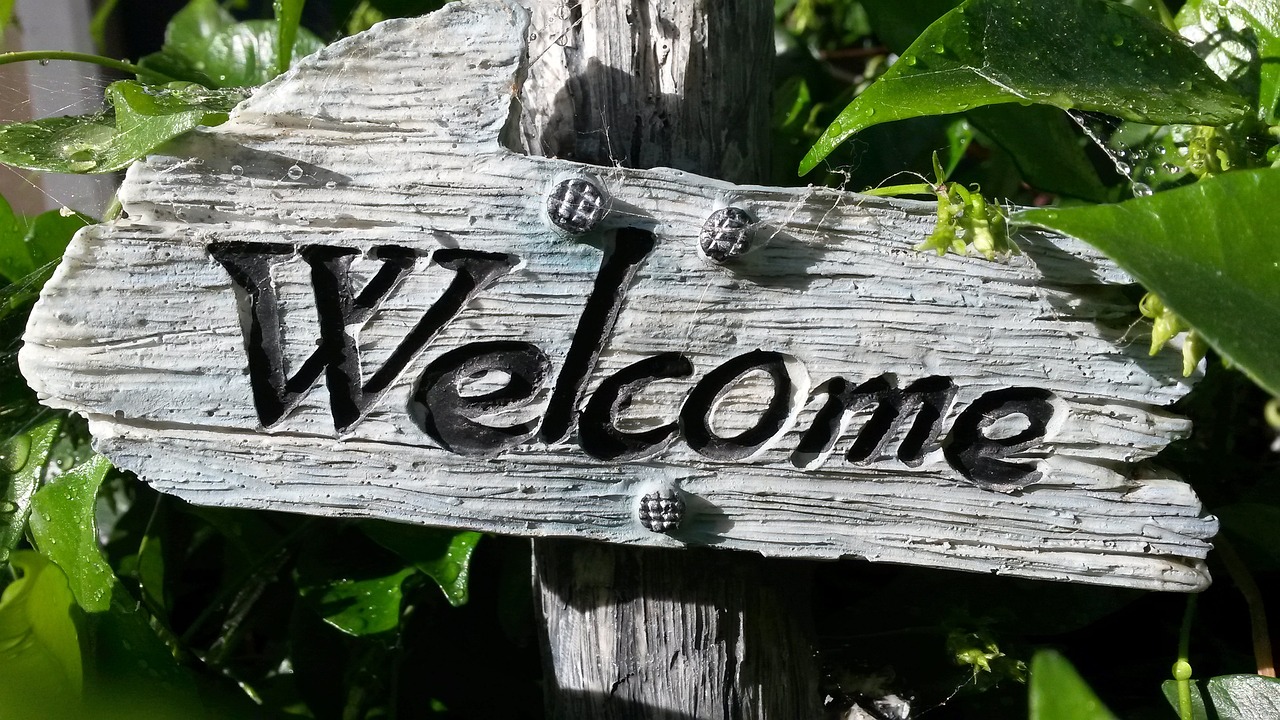
Choosing the Right Wood
When it comes to crafting your own wooden garden signs, one of the most important decisions you'll make is choosing the right type of wood. The wood you select not only impacts the durability and longevity of your sign but also plays a significant role in its overall appearance. Imagine your garden sign standing tall, weather-resistant and beautifully rustic, or perhaps sleek and modern, depending on your choice of materials. So, what are your options?
There are several types of wood that are popular among DIY enthusiasts for outdoor projects. Each type has its unique characteristics, advantages, and potential drawbacks. Here’s a quick rundown of some common wood types:
| Wood Type | Durability | Aesthetic Appeal | Cost |
|---|---|---|---|
| Cedar | High | Warm, rich color | Moderate |
| Pine | Moderate | Light color, easy to work with | Low |
| Redwood | Very High | Beautiful grain, deep color | High |
| Pressure-Treated Lumber | High | Less attractive, but functional | Low |
Let's delve a bit deeper into these options. Cedar is a favorite among many due to its natural resistance to decay and insects. It has a lovely aroma and a rich color that can add a warm touch to your garden. On the other hand, pine is a budget-friendly choice that is easy to find and work with, making it perfect for beginners. However, it may not last as long as cedar without proper treatment.
If you're looking for something truly durable and aesthetically pleasing, redwood is an excellent choice. Its beautiful grain and deep color can make your sign stand out beautifully in any garden setting. However, it comes with a higher price tag. Lastly, pressure-treated lumber is designed to withstand the elements, making it a practical option, although it may lack the charm of the other woods.
In summary, the wood you choose should reflect not only your budget but also the style you're aiming for in your garden. Consider how much exposure to the elements your sign will face and how much maintenance you're willing to commit to over time. With the right wood, your garden sign can become a stunning focal point, adding character and charm to your outdoor space.

Essential Tools and Materials
Before diving into the exciting world of crafting your own wooden garden signs, it's essential to gather the right tools and materials. Think of this as your treasure map; without the right tools, your DIY journey might lead you to a dead end. So, let’s gear up and make sure you have everything you need to create a stunning sign that will not only beautify your garden but also showcase your creativity!
First off, let’s talk about the basic hand tools. These are the unsung heroes of any DIY project. You’ll need a handsaw for cutting your wood into the desired shape and size. A chisel is also handy for adding any intricate designs or details you might want. Don’t forget a measuring tape to ensure every cut is precise, and a square to keep your edges straight. Finally, a sanding block will help you smooth out those rough edges, giving your sign a polished look.
Now, if you're looking to speed up the process and add a touch of precision, consider incorporating some power tools. A jigsaw can cut through wood like butter, allowing for more complex shapes that hand tools might struggle with. Additionally, a drill will be essential for making holes if you plan to hang your sign or attach it to a stake. These tools can save you time and energy, making your DIY experience much more enjoyable.
Next up are the finishing materials. Once your sign is cut and shaped, it’s time to make it shine! You can choose from a variety of paints, stains, and sealants. A good exterior paint or stain not only enhances the beauty of your sign but also protects it from the elements. Look for products that are specifically formulated for outdoor use to ensure longevity. After painting, applying a sealant will add an extra layer of protection against rain, sun, and wind, keeping your sign looking fresh for years to come.
Lastly, safety should never take a back seat. Always wear appropriate safety gear, such as gloves and safety goggles, when working with tools and materials. It’s easy to get caught up in the excitement of creating, but a little caution can go a long way in preventing accidents.
In summary, whether you’re a seasoned DIY enthusiast or a curious beginner, having the right tools and materials is crucial for your wooden garden sign project. With the right equipment in hand, you’ll be well on your way to crafting a beautiful and personalized addition to your garden. So, are you ready to get started?
- What type of wood is best for garden signs? Cedar and redwood are excellent options due to their natural resistance to decay.
- Can I use regular paint on my garden sign? It's best to use paint specifically designed for outdoor use to ensure durability.
- How do I make my sign weather-resistant? Applying a good quality sealant after painting will help protect your sign from the elements.
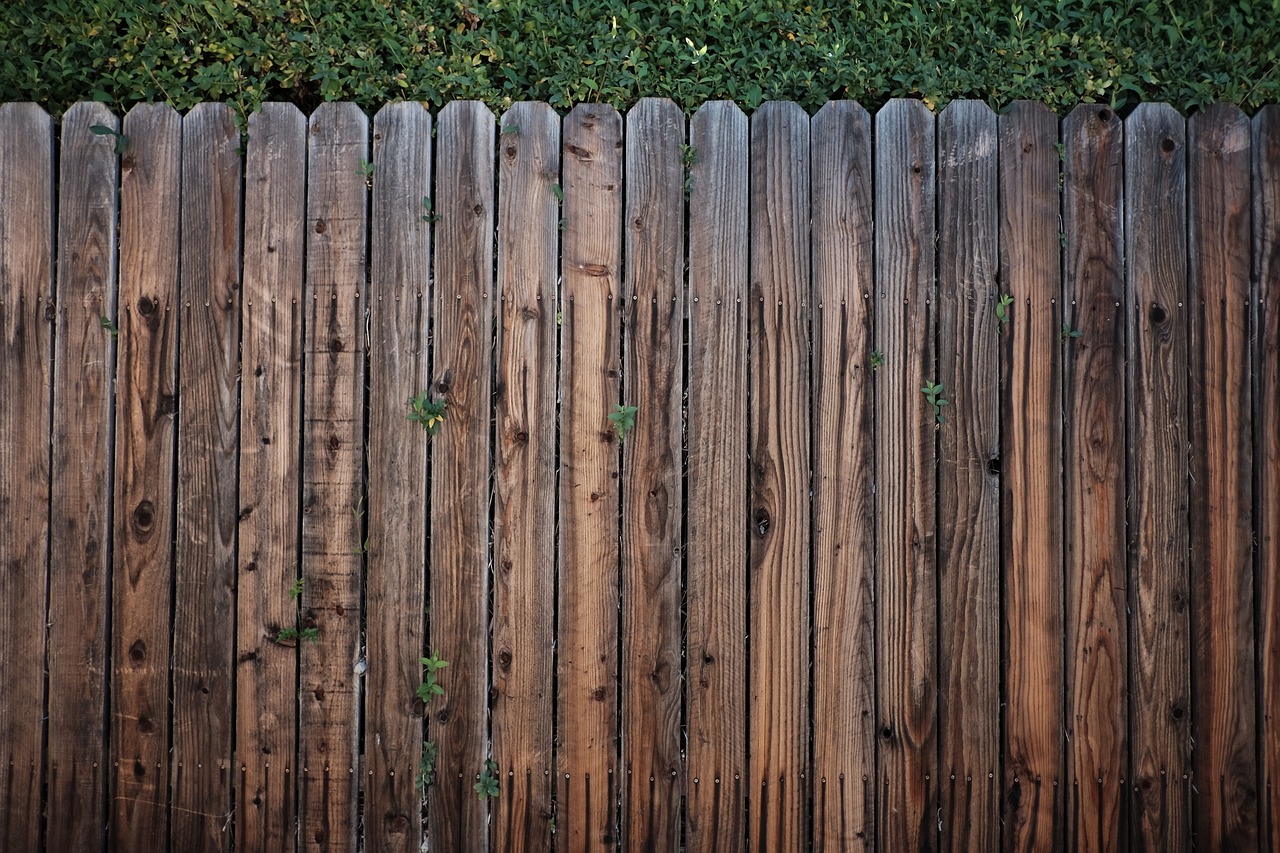
Basic Hand Tools
When diving into the world of DIY wooden garden signs, having the right can make all the difference. Think of these tools as your trusty sidekicks, always ready to assist you in crafting something beautiful. First on the list is a saw. Whether you opt for a hand saw or a coping saw, this tool will help you cut your wooden pieces to the desired shape and size. Remember, precision is key! A clean cut not only looks better but also makes the assembly process much smoother.
Next, you’ll need a chisel for those moments when you want to add a little flair to your sign. Chisels allow you to carve out designs or letters, giving your sign a personalized touch that truly stands out. Pair your chisel with a mallet to drive it into the wood without causing damage. Speaking of personalization, a ruler or measuring tape is essential for ensuring your measurements are spot on. There’s nothing worse than getting halfway through your project only to realize your dimensions are off!
Don’t forget about a square. This handy tool ensures your corners are perfectly straight, which is especially important when assembling multiple pieces of wood. If you want to make sure your letters are even and spaced correctly, a pencil is your best friend. It allows you to sketch out your design before making anything permanent. Finally, a sanding block or hand sander will help you smooth out those rough edges, giving your sign a polished, professional look.
To summarize, here’s a quick overview of the basic hand tools you'll need:
- Saw - for cutting wood
- Chisel - for carving designs
- Mallet - to drive the chisel
- Ruler/Measuring Tape - for accurate measurements
- Square - to ensure straight corners
- Pencil - for sketching designs
- Sanding Block/Hand Sander - for smoothing edges
Having these tools at your disposal will not only make the process easier but also more enjoyable. It’s like having the right ingredients for a delicious recipe; without them, you might end up with a less-than-satisfactory result. So gear up and get ready to unleash your creativity!
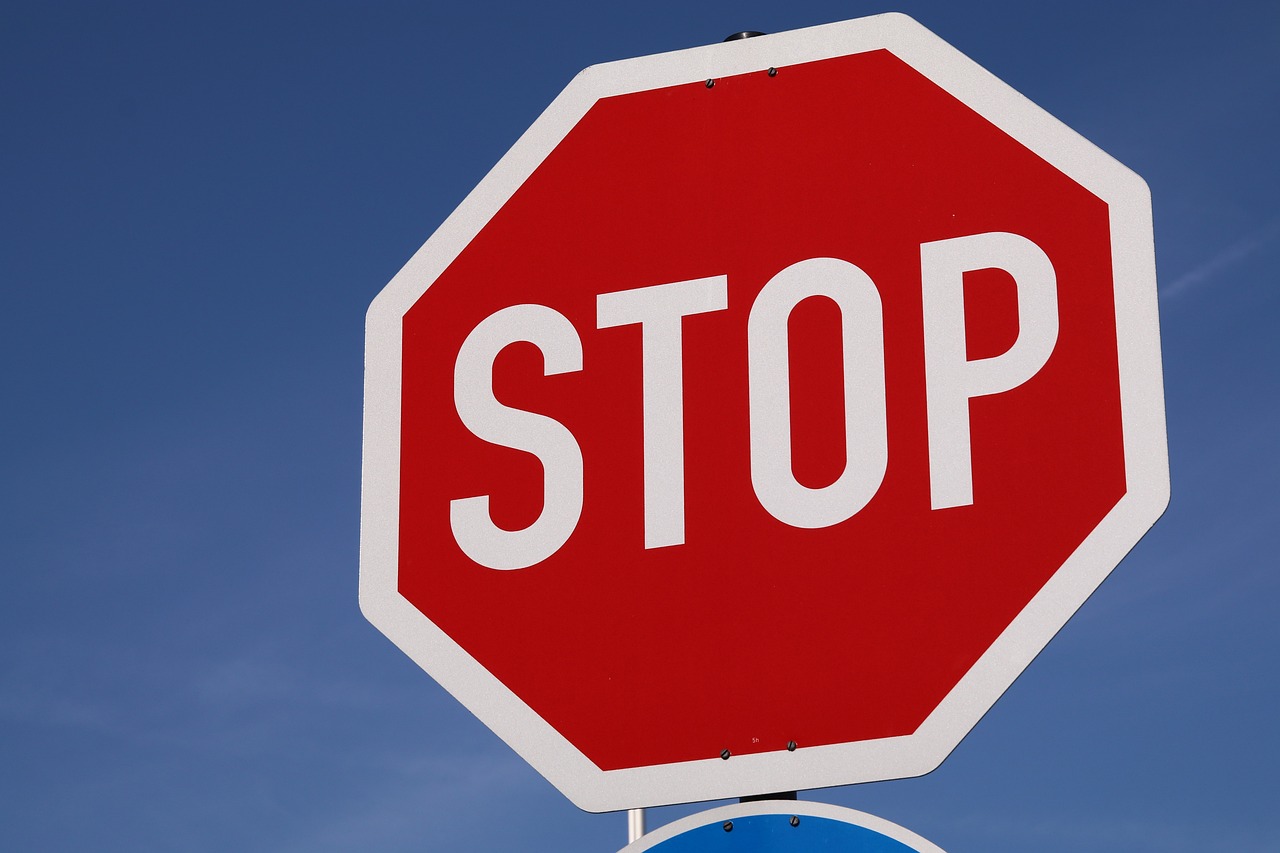
Power Tools for Efficiency
When it comes to crafting your own wooden garden signs, having the right power tools can make a world of difference. These tools not only save you time but also enhance the precision of your work, allowing you to achieve that professional finish you desire. Imagine trying to carve intricate designs with just a hand saw; it would be tedious and time-consuming! Power tools can transform that experience into a smooth and enjoyable process.
One of the most essential power tools for this project is the jigsaw. This versatile tool allows you to cut curves and intricate shapes, making it ideal for those creative designs you have in mind. With a jigsaw, you can easily navigate around corners and edges, giving your sign a unique flair. Plus, it’s relatively easy to use, even for beginners!
Another fantastic tool to consider is the router. This tool is perfect for adding decorative edges to your signs or even hollowing out areas for a more dimensional look. Using a router can elevate your sign from simple to stunning, adding that extra touch that makes it stand out in your garden. If you’re looking to add some flair to your lettering, a router can help you achieve those beautiful grooves that catch the eye.
Don't forget about the sander. A power sander will save you from the monotony of hand sanding, allowing you to smooth out your wooden surface quickly and efficiently. Whether you opt for a belt sander or a random orbital sander, the outcome will be a polished sign that feels as good as it looks. The right power sander can take your project from rough to refined in just a matter of minutes.
Lastly, consider investing in a drill. This tool is essential for creating holes for mounting your sign securely in the ground. A drill can also be used to attach additional features, like hooks for hanging or even decorative elements that enhance the overall design. With a drill, you can ensure that your sign is not only beautiful but also functional, standing the test of time against the elements.
In summary, using power tools like a jigsaw, router, sander, and drill can significantly enhance your efficiency and creativity in making wooden garden signs. They allow you to cut, shape, and finish with ease, transforming your DIY experience from a chore into a delightful project. So, gather your tools and get ready to create something truly special for your garden!
Q: Do I need to be an expert to use power tools for making garden signs?
A: Not at all! Many power tools are designed with user-friendliness in mind, making them accessible for beginners. Just take your time to learn and practice, and you'll be crafting beautiful signs in no time.
Q: What safety precautions should I take when using power tools?
A: Always wear safety goggles and a dust mask to protect your eyes and lungs. Ensure your workspace is clean and well-lit, and never operate tools while distracted.
Q: Can I use recycled wood for my garden signs?
A: Absolutely! Recycled wood can add character to your signs and is an eco-friendly choice. Just make sure it’s in good condition and free from rot or pests.

Finishing Materials
When it comes to crafting your wooden garden signs, the you choose can make all the difference between a project that looks homemade and one that appears professionally done. The right finishes not only enhance the beauty of your sign but also protect it from the elements, ensuring it lasts through the seasons. So, let’s dive into the world of paints, stains, and sealants that will elevate your garden sign to the next level!
First off, you have to decide whether you want a painted or stained finish. Paints offer a wide range of colors and can create a vibrant, eye-catching look. They come in two primary types: latex and oil-based. Latex paints are water-based, making them easy to clean up and quick to dry, while oil-based paints provide a durable finish that can withstand the harshest weather conditions. On the other hand, stains penetrate the wood, enhancing its natural grain and texture. They come in both transparent and semi-transparent options, allowing you to maintain the wood's character while adding a touch of color.
Next, let’s talk about sealants. After you’ve painted or stained your sign, applying a sealant is crucial. Sealants act as a protective barrier against moisture, UV rays, and other environmental factors that can cause deterioration. There are several types of sealants to choose from:
- Polyurethane: This is a popular choice for its durability and resistance to scratches and water.
- Varnish: Varnish provides a hard finish and is great for outdoor use, but it may require more frequent reapplication.
- Marine-grade sealants: Designed for boats, these sealants offer superior protection against water and UV damage, making them perfect for garden signs.
When applying these finishing materials, it's essential to follow the manufacturer's instructions for the best results. For instance, if you choose a paint, make sure to apply a primer first, especially if you're working with untreated wood. This not only helps the paint adhere better but also prevents the wood from absorbing too much paint, leading to a smoother finish.
Finally, don’t forget about the tools you'll need for application. A good quality brush can help you achieve a smooth, even coat, while a spray can be useful for covering large areas quickly. Just remember to work in a well-ventilated area, especially when using oil-based products, to avoid inhaling harmful fumes.
In conclusion, the finishing materials you select for your wooden garden signs play a pivotal role in both aesthetics and durability. By choosing the right combination of paints, stains, and sealants, you can create a stunning sign that not only reflects your personality but also withstands the test of time.
Q: What type of wood is best for garden signs?
A: Cedar and redwood are excellent choices due to their natural resistance to rot and insects. Pine is also popular but may require more maintenance.
Q: How often should I apply sealant to my garden sign?
A: It's recommended to reapply sealant every 1-2 years, depending on your local weather conditions.
Q: Can I use regular paint on outdoor signs?
A: While you can use regular paint, it's best to opt for exterior-grade paints that are specifically designed to withstand outdoor conditions.

Safety Precautions
When diving into the world of DIY projects, especially when it involves tools and materials, safety should be your number one priority. Imagine you're a knight preparing for battle; without the right armor, you're vulnerable to all sorts of mishaps. In the same way, equipping yourself with safety measures can protect you from potential injuries while crafting your wooden garden signs.
First and foremost, always wear appropriate personal protective equipment (PPE). This includes safety goggles to shield your eyes from flying debris, ear protection if you're using loud power tools, and gloves to protect your hands from splinters and sharp edges. Think of these items as your knightly armor; they’re essential for keeping you safe as you embark on your crafting adventure.
Additionally, it’s crucial to maintain a clean and organized workspace. A cluttered area can lead to accidents, like tripping over tools or misplacing sharp objects. Create a designated space for your project, ensuring that everything you need is within reach but not in the way. You wouldn’t want to be fumbling for tools while holding a piece of wood, right? Keeping your area tidy is akin to setting the stage for a grand performance; it allows you to focus on the task at hand without distractions.
Before using any power tools, take a moment to read the manufacturer’s instructions. Each tool has its quirks and safety features, and knowing how to operate them properly can prevent accidents. For instance, always ensure that your tools are unplugged when changing blades or bits, and never bypass safety guards. It’s like following the rules of the road; ignoring them can lead to serious consequences.
Moreover, when working with wood, be mindful of your surroundings. Ensure that children and pets are kept at a safe distance while you’re busy crafting. Just as you wouldn’t want a child running onto a busy street, it’s important to keep your loved ones out of harm’s way while you’re handling tools and materials. Establish a clear boundary around your workspace so everyone knows where it’s safe to be.
Lastly, consider having a first aid kit nearby. Accidents can happen, even to the most cautious DIYer. Having a kit stocked with band-aids, antiseptic wipes, and other essentials can make a world of difference in case of minor injuries. Think of it as your safety net; it’s always better to be prepared for the unexpected.
By following these safety precautions, you’ll not only protect yourself but also enhance your overall DIY experience. Remember, the goal is to have fun while creating beautiful wooden garden signs that reflect your personality and style. So don your armor, keep your workspace tidy, and enjoy the journey of crafting!
- What should I wear while working on my garden signs? Always wear safety goggles, gloves, and ear protection when using power tools.
- How can I prevent accidents in my workspace? Keep your area organized, and ensure that children and pets are at a safe distance.
- Is it necessary to have a first aid kit? Yes, it’s always a good idea to be prepared for minor injuries while working on DIY projects.
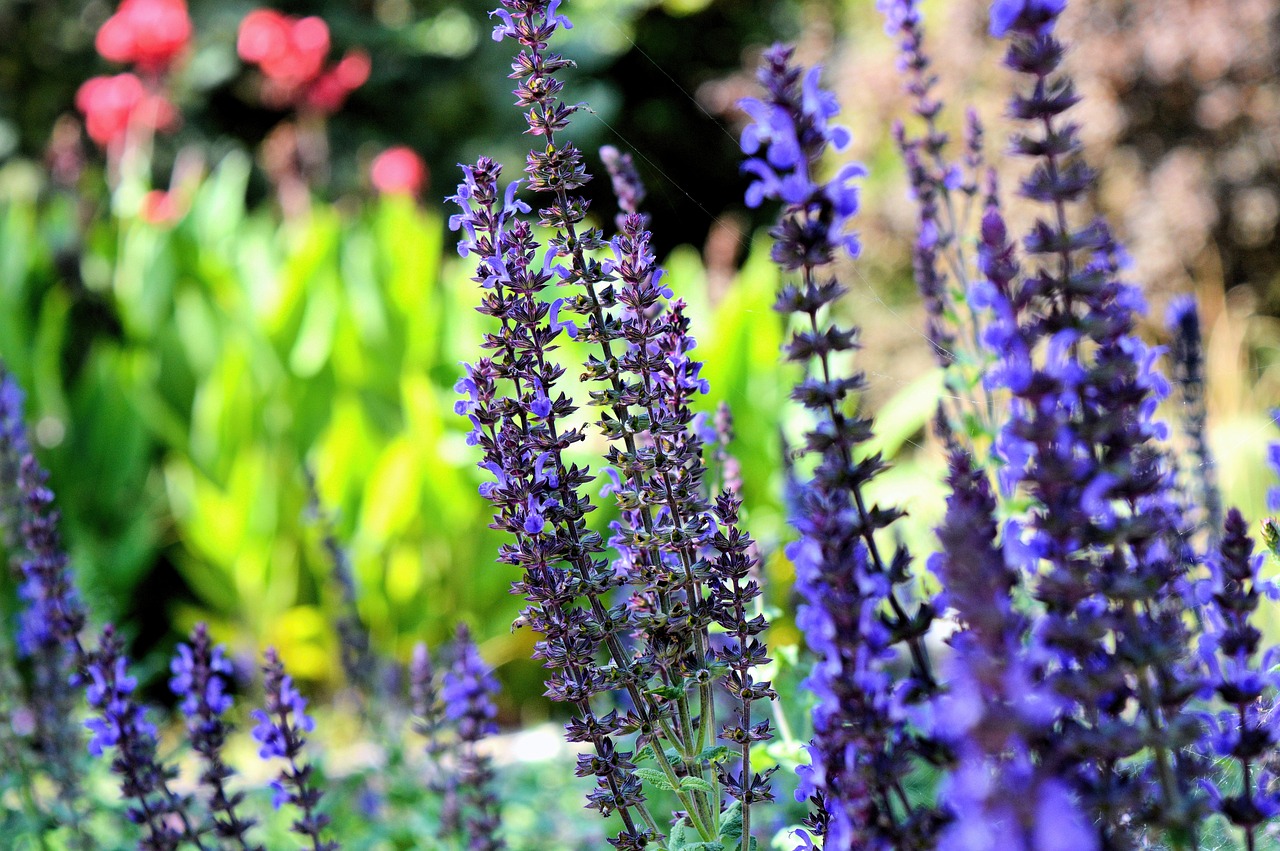
Designing Your Sign
When it comes to designing your wooden garden sign, this is where your creativity can truly shine! Think of your garden sign as a canvas waiting for your personal touch. Whether you want it to reflect your personality, convey a message, or simply add a touch of charm to your outdoor space, the design process is both exciting and rewarding. Start by brainstorming ideas that resonate with you. Do you want a rustic vibe, a modern look, or something whimsical? Your sign should be a reflection of your unique style!
Choosing the right fonts and sizes is crucial for ensuring that your sign is not only beautiful but also readable from a distance. Imagine walking through your garden and spotting a sign that perfectly captures the essence of your space. To achieve this, consider the following:
- Legibility: Select fonts that are easy to read. Script fonts may look elegant but can be hard to decipher from afar.
- Size Matters: Ensure your text is large enough to be seen without straining the eyes. A good rule of thumb is to make the main text at least 2-3 inches tall.
- Contrast: Use colors that stand out against the background of the wood. Dark letters on a light background or vice versa often work best.
Incorporating graphics can also elevate your sign's visual appeal. Think of adding simple images or symbols that complement the text. For instance, if your sign reads "Herb Garden," consider adding a small graphic of a herb or a garden tool. This not only makes your sign more attractive but also gives it a personalized touch. You can sketch out your ideas on paper or use graphic design software to visualize your concept before you start cutting and painting.
As you move forward with your design, remember to consider the overall theme of your garden. Are you going for a whimsical look with bright colors and playful fonts, or something more elegant with muted tones and classic typography? The design choices you make will set the tone for your entire outdoor space, so take your time and enjoy the process!
Lastly, don’t forget to test your design before you finalize it. Print it out or sketch it on paper to see how it looks in different sizes and orientations. Sometimes, what seems perfect in your mind may need a little tweaking when you see it in a tangible form. This step can save you time and materials in the long run!
Q: What type of wood is best for garden signs?
A: Cedar and redwood are great choices due to their natural resistance to decay and insects. Pine is also popular but may require more maintenance.
Q: How can I make my sign weather-resistant?
A: Using a good sealant after painting will help protect your sign from the elements. Look for sealants specifically designed for outdoor use.
Q: Can I use vinyl lettering for my sign?
A: Absolutely! Vinyl lettering can be a great way to achieve a professional look without the need for painting. Just make sure the surface is smooth and clean before application.
Q: What if I want to change my sign later?
A: Consider using removable paint or vinyl that can be easily replaced without damaging the wood. This way, you can update your sign as often as you like!
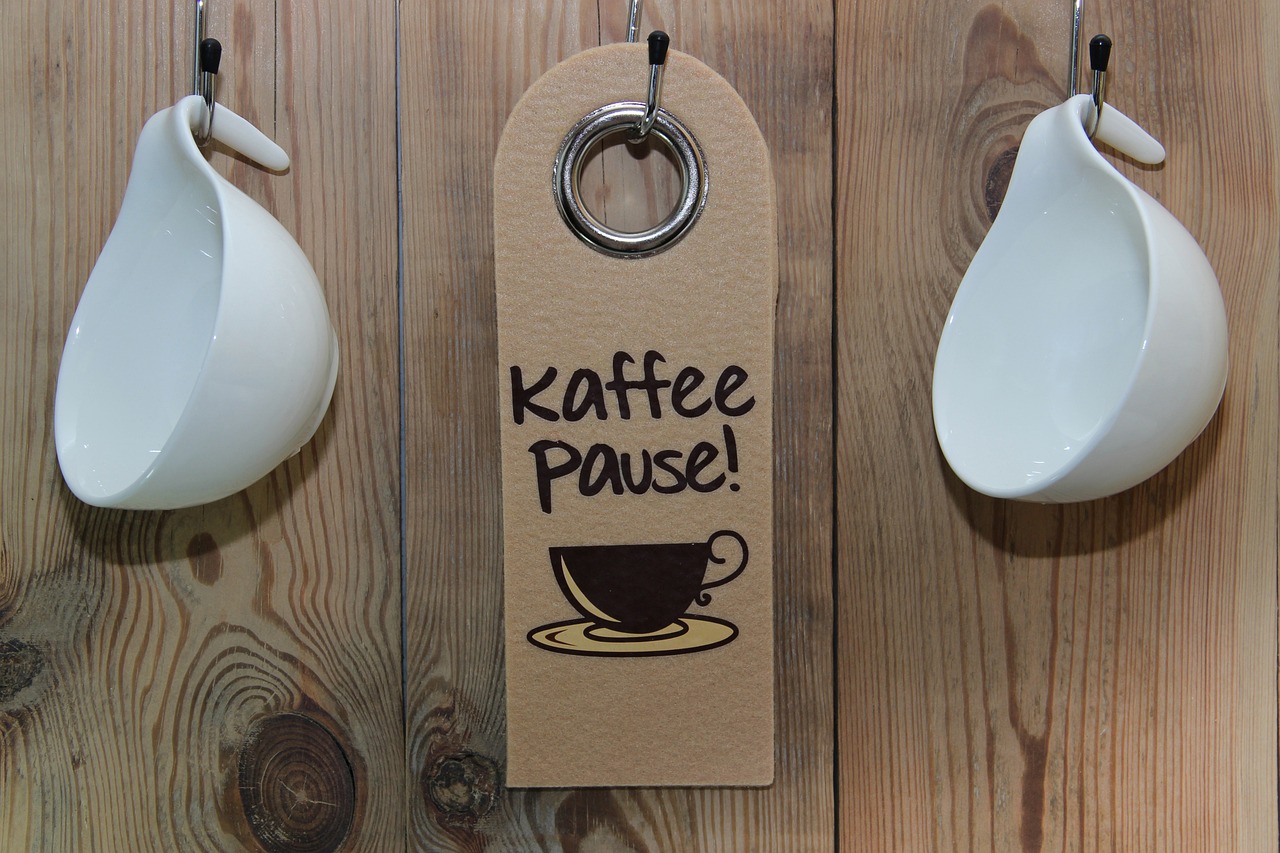
Choosing Fonts and Sizes
When it comes to creating wooden garden signs, the choice of fonts and sizes can make all the difference. Think of your garden sign as a canvas where you express your personality and style. Just like you wouldn’t wear mismatched shoes, you don’t want your sign to look like it was thrown together. The right font can convey a sense of warmth, elegance, or even a touch of whimsy, depending on what you want to express.
First, consider the readability of the font. You want your sign to be easily legible from a distance, especially if you’re using it to label plants or provide directions. A font that’s too fancy might look beautiful up close but can become a challenge to read from afar. For instance, sans-serif fonts like Arial or Helvetica are great choices for clarity, while script fonts can add a decorative touch when used sparingly.
Next, think about the size of the text. Larger fonts are typically more visible, but you also want to strike a balance. If your sign is small, using a huge font can overwhelm the space, while a tiny font on a large sign might get lost. A good rule of thumb is to use a font size that is at least 1 inch tall for main headings and around 0.5 to 0.75 inches for subheadings. This ensures that your message is clear and can be read easily by anyone passing by.
To help you visualize the impact of different fonts and sizes, here’s a simple table that compares a few popular font styles along with their recommended sizes:
| Font Style | Recommended Size | Notes |
|---|---|---|
| Arial | 2 inches | Highly readable, great for clear messages. |
| Times New Roman | 1.5 inches | Classic and formal, best for traditional gardens. |
| Brush Script | 1 inch | Adds a personal touch; use for names or quotes. |
| Comic Sans | 1.5 inches | Fun and quirky, good for playful garden themes. |
Finally, don’t forget about contrast. A beautifully crafted sign won’t be effective if the text blends into the background. Choose colors that pop against the wood grain. For example, if you have a dark-stained sign, consider using light-colored paint for the lettering. This not only enhances visibility but also adds a striking visual appeal to your garden.
In conclusion, choosing the right fonts and sizes for your wooden garden sign is all about finding the perfect balance between style and functionality. Take your time to experiment with different combinations, and don’t hesitate to sketch out a few designs before committing to the final look. After all, your garden sign is a reflection of you, and it deserves to stand out!
- What is the best font for outdoor signs? - Fonts that are sans-serif, like Arial or Helvetica, are generally the best for outdoor signs due to their readability.
- How big should the letters be on my garden sign? - A good rule of thumb is to use a font size of at least 1 inch for main text and 0.5 to 0.75 inches for any subtext.
- Can I mix different fonts on my sign? - Yes, but it’s best to limit yourself to two different fonts to maintain a cohesive look.
- What colors work best for garden signs? - High-contrast colors usually work best. For example, white or yellow text on a dark wood background is very effective.

Incorporating Graphics
When it comes to making your wooden garden sign truly stand out, incorporating graphics is an excellent way to add a personal touch and enhance its visual appeal. Think of your garden sign as a canvas; adding images or designs can transform it from a simple marker into a captivating piece of art that reflects your unique style. But how do you go about choosing and incorporating graphics effectively?
First, consider the theme of your garden. Are you cultivating a vibrant flower garden, a serene herb patch, or perhaps a whimsical vegetable plot? Your graphics should harmonize with the overall vibe of your space. For instance, if you have a rustic garden, you might opt for hand-painted floral designs or simple silhouettes of garden tools. On the other hand, a modern garden could benefit from sleek, minimalist graphics.
Here are some popular graphic ideas to consider:
- Nature-Inspired Designs: Leaves, flowers, and butterflies can add a touch of whimsy and connection to nature.
- Garden Tools: Illustrations of shovels, rakes, or watering cans can evoke the spirit of gardening.
- Personal Symbols: Incorporate symbols that hold personal significance, like a family crest or a favorite animal.
Once you have your graphics in mind, the next step is to determine how to apply them to your sign. There are several methods to consider:
- Stencils: Create or purchase stencils for precise designs. This method is great for those who want clean, professional-looking graphics.
- Hand-Painting: If you have a knack for painting, why not unleash your creativity? Hand-painted graphics offer a unique, personal touch.
- Vinyl Decals: For a modern approach, consider using vinyl decals. These can be easily applied and removed without damaging the wood.
Don't forget to use colors that complement your sign's background. Bright colors can make your graphics pop, while muted tones can create a more cohesive and elegant look. If you're unsure about color choices, consider creating a small color palette on a scrap piece of wood. This allows you to visualize how different colors will work together before committing to your final design.
Lastly, remember that less is often more. While it can be tempting to fill your sign with multiple graphics, a clean and simple design can often have a more profound impact. Focus on one or two key images that resonate with you and your garden's theme. This approach not only enhances readability but also creates a striking visual that draws attention.
Incorporating graphics into your wooden garden sign is not just about aesthetics; it’s about expressing your personality and making your outdoor space feel like home. So grab your tools, unleash your creativity, and let your garden sign tell your story!
Q1: What type of graphics work best for wooden garden signs?
A1: Nature-inspired designs, garden tools, and personal symbols are great options. Choose graphics that resonate with your garden's theme for the best effect.
Q2: Can I use any paint for my graphics?
A2: It's best to use outdoor acrylic paints or specially formulated paint for wood to ensure durability and weather resistance.
Q3: How do I seal my graphics to protect them?
A3: After your graphics are applied and dried, use a clear outdoor sealant to protect them from the elements. This will help maintain their vibrancy over time.

Painting and Finishing Techniques
Once you've cut and designed your wooden garden sign, the next exciting phase is all about painting and finishing. This is where your creativity truly comes to life! Think of this stage as the makeup for your sign; it enhances its appeal and protects it from the elements. To achieve the best results, you’ll want to consider a few different techniques and materials that can elevate your project.
First up, let’s talk about the different methods of applying paint. You have two primary options: brush painting and spray painting. Each technique has its unique advantages. Brush painting allows for more control and is perfect for intricate details and touch-ups. On the other hand, spray painting can cover large areas quickly and evenly, making it a great choice for those who want a smooth finish without the brush strokes. However, be mindful of the wind and surrounding areas when using spray paint, as it can easily drift and create a mess.
When it comes to choosing the right paint, you’ll want to opt for outdoor-grade acrylic paints, which are durable and weather-resistant. These paints come in a variety of colors and finishes, allowing you to customize your sign to match your garden's aesthetic. If you’re feeling adventurous, consider mixing your own colors to create something truly unique!
After painting, the finishing touches are crucial. Applying a protective sealant is essential to ensure your sign withstands rain, sun, and snow. There are several types of sealants available, including polyurethane, varnish, and even eco-friendly options. Each has its own application method and drying time, so be sure to read the instructions carefully. For example, polyurethane can be applied with a brush or spray, and it typically dries clear, giving your sign a glossy finish.
Here’s a quick comparison of popular sealants:
| Sealant Type | Finish | Durability | Application Method |
|---|---|---|---|
| Polyurethane | Glossy | High | Brush/Spray |
| Varnish | Satin | Medium | Brush |
| Eco-friendly sealant | Matte | Medium | Brush |
Before applying any sealant, ensure your paint is completely dry. This will prevent any smudging or mixing of colors. Once you’ve applied the sealant, allow it to cure for the recommended time before placing your sign outdoors. This patience will pay off, as your sign will not only look stunning but also stand the test of time!
Now that you’ve mastered the painting and finishing techniques, your wooden garden sign is set to become a focal point in your outdoor space. Remember, this is your chance to express your personality and creativity, so don’t be afraid to experiment with colors and designs!
- How long does it take for paint to dry? – Typically, acrylic paint can take anywhere from 30 minutes to a few hours to dry, depending on the thickness of the application and environmental conditions.
- Can I use regular paint for outdoor signs? – It’s best to use outdoor-grade paints as they are specifically formulated to withstand weather conditions and UV rays.
- What type of sealant is best for wooden signs? – Polyurethane sealants are highly recommended for their durability and protective qualities.
- How do I clean my painted garden sign? – Use a soft cloth and mild soap to gently clean your sign. Avoid harsh chemicals that could damage the paint or sealant.

Brush vs. Spray Painting
When it comes to painting your wooden garden signs, choosing between brush and spray painting can feel like a daunting decision. Each method has its own set of advantages and disadvantages that can affect the final look of your project. So, how do you decide which technique suits your needs best? Let’s break it down!
Brush painting is often favored for its control and precision. With a brush in hand, you can easily reach small crevices and intricate details, allowing for a more personalized touch. This method is particularly useful if you’re working with a design that requires fine lines or if you’re applying multiple colors in a detailed pattern. Additionally, brush painting can give your sign a textured look that adds depth and character. However, it does require a steady hand and a bit more time, as you’ll need to carefully apply each stroke.
On the other hand, spray painting offers a quick and efficient way to cover large areas. If you want a smooth, even finish without the brush strokes, spray painting is the way to go. It’s especially handy for larger signs or when you’re working with a solid color. The downside? It can be a bit tricky to control, especially in windy conditions, and there's a higher chance of overspray. You might find yourself needing to tape off areas to avoid unwanted paint on other parts of the sign.
To help you visualize the differences, here’s a quick comparison table:
| Aspect | Brush Painting | Spray Painting |
|---|---|---|
| Control | High - allows for detailed work | Medium - can overspray |
| Speed | Slower - requires careful application | Fast - covers large areas quickly |
| Finish | Textured and personal | Smooth and even |
| Preparation | Minimal - just a brush and paint | More - requires masking and ventilation |
Ultimately, the choice between brush and spray painting comes down to your specific project needs and personal preference. If you’re a fan of detailed work and enjoy the process of painting, grab that brush! But if you’re looking for speed and efficiency, spray painting might be your best bet. Whichever method you choose, remember to have fun and let your creativity shine through!
Q: Can I use both methods on the same sign?
A: Absolutely! Many DIY enthusiasts use a combination of brush and spray painting to achieve unique effects. For example, you could spray paint the base color and then use a brush for detailing.
Q: Which method is more durable?
A: Both methods can be durable if applied correctly. However, spray paint often provides a more even coat, which can be beneficial for outdoor signs exposed to the elements.
Q: Do I need to seal my painted sign?
A: Yes, regardless of the painting method, applying a sealant is crucial to protect your wooden garden sign from moisture and UV damage.

Applying Sealants
Once you've painted your wooden garden sign, the next step is to protect your hard work with a quality sealant. Applying sealants is crucial because it acts as a barrier against harsh weather conditions, UV rays, and moisture that can lead to fading, cracking, or warping. Imagine spending hours crafting a beautiful sign, only for it to deteriorate after a few rainstorms! To avoid this, let’s dive into the different types of sealants available and how to apply them effectively.
There are several types of sealants you can choose from, each with its own set of benefits. For wooden garden signs, you might consider:
- Polyurethane Sealants: These are incredibly durable and provide excellent protection against moisture. They come in both water-based and oil-based options. The water-based versions dry clear and are easier to clean up, while oil-based ones offer a richer finish but can take longer to dry.
- Varnish: This is another popular choice that offers a hard, glossy finish. It’s great for enhancing the wood grain and can be used over paint for added protection.
- Epoxy Sealants: If you're looking for something that can withstand extreme conditions, epoxy sealants are your best bet. They create a thick, waterproof layer that can endure heavy rain and intense sunlight.
Applying sealants is a straightforward process, but it requires some attention to detail to ensure a long-lasting finish. Here’s a simple guide to help you:
- Prepare the Surface: Make sure your sign is completely dry and free from dust or debris. If you’ve just painted it, allow at least 24 hours for the paint to cure.
- Choose the Right Application Method: Depending on the sealant type, you can use a brush, roller, or spray. For large signs, a roller or spray might speed up the process.
- Apply Evenly: Start at one corner and work your way across the sign. Ensure you apply an even coat to avoid drips or pooling, which can ruin the finish.
- Allow to Dry: Follow the manufacturer's instructions regarding drying time. It’s often best to apply multiple thin coats rather than one thick coat.
- Inspect and Reapply: After the first coat has dried, inspect your sign. If you notice any areas that seem less protected, apply a second coat for extra durability.
In conclusion, applying sealants is a vital step in preserving your wooden garden sign's beauty and functionality. By taking the time to select the right sealant and applying it properly, you can ensure that your sign remains a charming addition to your garden for years to come. Remember, a little extra effort in this stage can save you from having to redo your project sooner than you’d like!
Q: How often should I reapply sealant to my garden sign?
A: It's recommended to check your sign annually for signs of wear and reapply sealant as needed. Depending on your local weather conditions, you may need to do this more frequently.
Q: Can I use sealants on painted signs?
A: Yes, sealants can be applied over painted surfaces. Just ensure that the paint is fully cured before applying the sealant for the best results.
Q: What should I do if my sign starts to fade or show wear?
A: If you notice fading, you can lightly sand the surface and reapply paint followed by a fresh layer of sealant to restore its appearance.

Installing Your Garden Sign
Congratulations! You've crafted a beautiful wooden garden sign that reflects your personality and enhances your outdoor space. Now comes the exciting part: installing it! You might think that simply sticking it in the ground will do, but to make sure your sign stands tall and proud, there are a few key considerations to keep in mind. First, think about the location. Where do you want your sign to shine? It should be visible from various angles, especially if you have guests over or if you want to showcase your garden to passersby. Consider placing it near a pathway, at the entrance of your garden, or even in a flower bed where it can blend beautifully with the blooms.
Next, you need to consider the ground conditions. If your garden soil is soft and loamy, it might be easier to place your sign directly into the ground. However, if you have rocky or hard soil, you may need to dig a small hole or use a post holder for added stability. A well-installed sign not only looks great but also withstands the test of time and weather. Think of it as a sturdy foundation for a house; without it, everything can come crashing down!
When you're ready to install, make sure to use a level to ensure your sign is straight. An uneven sign can be an eyesore and may even lead to damage over time due to leaning or falling over. If your sign has a stake, drive it into the ground with a mallet, making sure it’s deep enough to support the height and weight of the sign. If you’re using a post holder, place it in the ground first, then slide your sign into the holder. This method provides extra support, especially for larger signs.
Once your sign is installed, it’s important to consider maintenance. Just like any other feature in your garden, your sign will need some love to keep it looking fresh. Regularly check for any signs of wear and tear, especially after heavy rains or storms. You might want to apply a new coat of sealant every couple of years to ensure it remains protected from the elements.
In summary, installing your garden sign is not just about putting it in the ground; it's about making a statement. A well-placed, well-maintained sign can be the cherry on top of your beautiful garden. So, grab your tools and get ready to make your garden even more inviting!
Here are some common questions that might help you further:
- How deep should I install my garden sign? - Ideally, the stake should be buried at least 6-12 inches deep for stability, depending on the height of the sign.
- Can I use my garden sign in winter? - Yes! Just ensure it’s properly sealed and placed in a location that isn’t prone to heavy snow or ice accumulation.
- What materials are best for outdoor signs? - Cedar and redwood are excellent choices due to their natural resistance to rot. However, any treated wood can work well too.
- How can I clean my wooden garden sign? - Use a soft cloth and mild soap with water. Avoid harsh chemicals that can damage the finish.

Placement Considerations
When it comes to installing your wooden garden sign, the placement can make all the difference in how it's perceived and how effectively it communicates your message. Think of your garden sign as a stage for your creativity; it deserves a spot where it can truly shine. So, what should you consider when deciding on the perfect location?
First and foremost, visibility is key. You want your sign to be seen by anyone who enters your garden, whether it's family, friends, or curious passersby. Consider placing it near the entrance or in a prominent spot where it can catch the eye. Imagine walking into a garden filled with vibrant flowers and greenery, only to be greeted by a charming sign that welcomes you or provides information about the plants. It’s like a warm hug for your garden!
Next, think about the theme of your garden. If you have a specific theme—like a vegetable garden, a flower garden, or even a whimsical fairy garden—your sign should reflect that. For instance, a rustic wooden sign with a hand-painted carrot might look perfect in your vegetable patch, while a colorful sign with butterflies could enhance a flower garden. The sign should feel like a natural extension of your outdoor space.
Another important aspect to consider is the environment around your sign. Make sure it won't be obstructed by overgrown plants or garden furniture. You want it to stand out, not get lost in the foliage. If your garden has a lot of tall plants, consider raising your sign on a stake or a post to ensure it remains visible. Think of it as giving your sign a little elevation, allowing it to proudly proclaim its message from above!
Finally, consider the weather conditions in your area. If you live in a place prone to strong winds or heavy rain, make sure your sign is secured properly. You wouldn't want your beautiful creation to become a casualty of a storm! Using durable materials and sealants can also help your sign withstand the elements, ensuring it remains a cherished part of your garden for years to come.
In summary, effective placement of your garden sign involves:
- Ensuring visibility for maximum impact
- Aligning with the theme of your garden
- Considering the surrounding environment for clarity
- Preparing for weather conditions to maintain durability
By taking these factors into account, you can ensure that your wooden garden sign not only enhances the beauty of your outdoor space but also serves its intended purpose effectively. Happy gardening!
Q: What type of wood is best for outdoor signs?
A: Cedar and redwood are excellent choices due to their natural resistance to rot and insects. Pine is also a popular option but may require additional treatment for longevity.
Q: How can I make my sign more weather-resistant?
A: Using a high-quality outdoor sealant after painting or staining your sign can greatly enhance its durability against the elements.
Q: Can I use any type of paint for my garden sign?
A: It's best to use outdoor acrylic paints or specially formulated sign paints, as they are designed to withstand moisture and UV rays.
Q: What tools do I need to install my garden sign?
A: Basic tools like a hammer, nails or screws, and a level will suffice for installation. If you're using stakes, a mallet may be helpful as well.
Q: How often should I maintain my garden sign?
A: Regular maintenance, such as cleaning and reapplying sealant, should be done at least once a year to keep your sign looking fresh and vibrant.
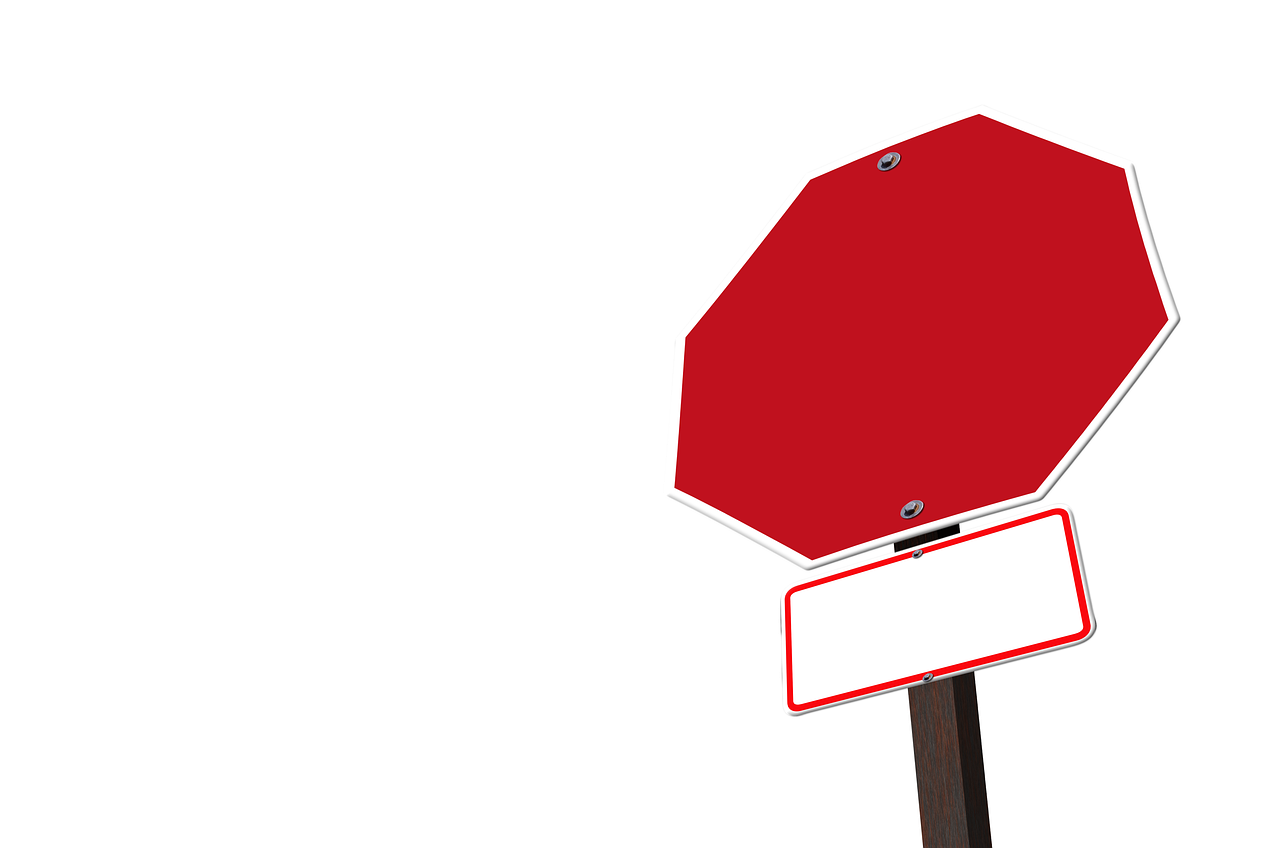
Maintenance Tips
To keep your wooden garden sign looking fresh and vibrant, regular maintenance is essential. Just like a well-tended garden, your sign will flourish with a little care and attention. Start by inspecting your sign at least twice a year for any signs of wear and tear, such as fading, cracking, or peeling. If you notice any damage, don't panic! A little touch-up can work wonders. Consider using a fine-grit sandpaper to gently smooth out any rough spots or peeling paint, ensuring a clean surface for repainting.
When it comes to repainting, choose a day that's dry and mild. This will help the paint adhere better and dry more quickly. If your sign has been subjected to harsh weather, a fresh coat of paint will not only enhance its appearance but also provide a protective barrier against the elements. For longevity, opt for outdoor paint designed to withstand moisture and UV rays. Remember, a well-painted sign can be the difference between a charming garden feature and a weathered eyesore!
Don't forget about the sealant! Applying a clear sealant after painting can add an extra layer of protection. This is particularly important if your sign is made from softer woods like pine, which can absorb moisture more readily. A good sealant will help keep water out and prevent warping or splitting. Make sure to reapply the sealant every couple of years, especially if you notice that the finish is starting to look dull.
Additionally, consider the placement of your sign. If it’s in a spot that gets a lot of direct sunlight, it may fade faster than if it were in a shaded area. If possible, rotate your sign periodically to ensure even exposure to the elements. This simple step can help prolong its life significantly.
Finally, keep an eye on the surrounding area. Overgrown plants or weeds can obscure your beautiful sign and lead to unnecessary wear and tear. Regularly trim back any foliage that might encroach upon your sign's space, ensuring it remains a standout feature in your garden.
Q: How often should I repaint my garden sign?
A: It's recommended to repaint your garden sign every 2-3 years, or sooner if you notice significant fading or damage.
Q: What type of sealant is best for wooden signs?
A: A clear polyurethane sealant is ideal for wooden signs as it provides excellent protection against moisture and UV rays.
Q: Can I use regular paint on my garden sign?
A: While you can use regular paint, it's best to choose outdoor paint specifically formulated to withstand the elements for better durability.
Q: How can I protect my sign during winter?
A: If you live in an area with harsh winters, consider bringing your sign indoors or covering it with a protective tarp to shield it from snow and ice.
Q: What should I do if my sign starts to warp?
A: If your sign warps, try to gently reshape it while it's still damp from rain. If it's severely warped, you may need to replace it or consider using a different type of wood that is more resistant to warping.
Frequently Asked Questions
- What type of wood is best for garden signs?
When it comes to choosing the right wood for your garden signs, you want something that’s both durable and aesthetically pleasing. Cedar is a popular choice due to its natural resistance to decay and insects. Pine is also a good option, especially if you’re looking for something more affordable. Just remember, whatever wood you choose, it should be able to withstand the elements!
- What tools do I need for making wooden garden signs?
You'll need a mix of basic hand tools and power tools to get the job done efficiently. Essential hand tools include a saw, sandpaper, and a paintbrush. If you're looking to speed things up, consider using a jigsaw or a router for cutting and shaping. Don't forget safety gear like goggles and gloves to keep yourself protected!
- How can I make my garden sign more visually appealing?
Design is key when it comes to creating a stunning garden sign. Think about incorporating unique fonts and graphics that reflect your personality or the theme of your garden. You could even add some decorative elements like flowers or vines to give it that extra charm!
- What are the best painting techniques for garden signs?
Choosing between brush and spray painting can be a game-changer for your sign's finish. Brush painting allows for more control, especially for detailed work, while spray painting can cover larger areas quickly. Whichever method you choose, make sure to apply even coats and let each layer dry thoroughly for a professional look!
- How do I protect my garden sign from the weather?
Applying a good quality sealant is crucial for protecting your wooden garden sign from rain, sun, and other elements. Make sure to choose a sealant that’s specifically designed for outdoor use. Applying it after painting will help lock in the beauty and keep your sign looking fresh for years to come!
- Where should I place my garden sign?
Placement is everything! You want your garden sign to be visible and complement the surrounding plants. Consider placing it near a pathway or at the entrance of your garden. Just ensure it's not in a spot where it could get knocked over or hidden by taller plants!
- How can I maintain my wooden garden sign?
Regular maintenance will keep your garden sign looking its best! Check for any signs of wear and tear, and clean it gently with a damp cloth. If the paint starts to fade, don’t hesitate to give it a fresh coat. A little love goes a long way in preserving its beauty!



















